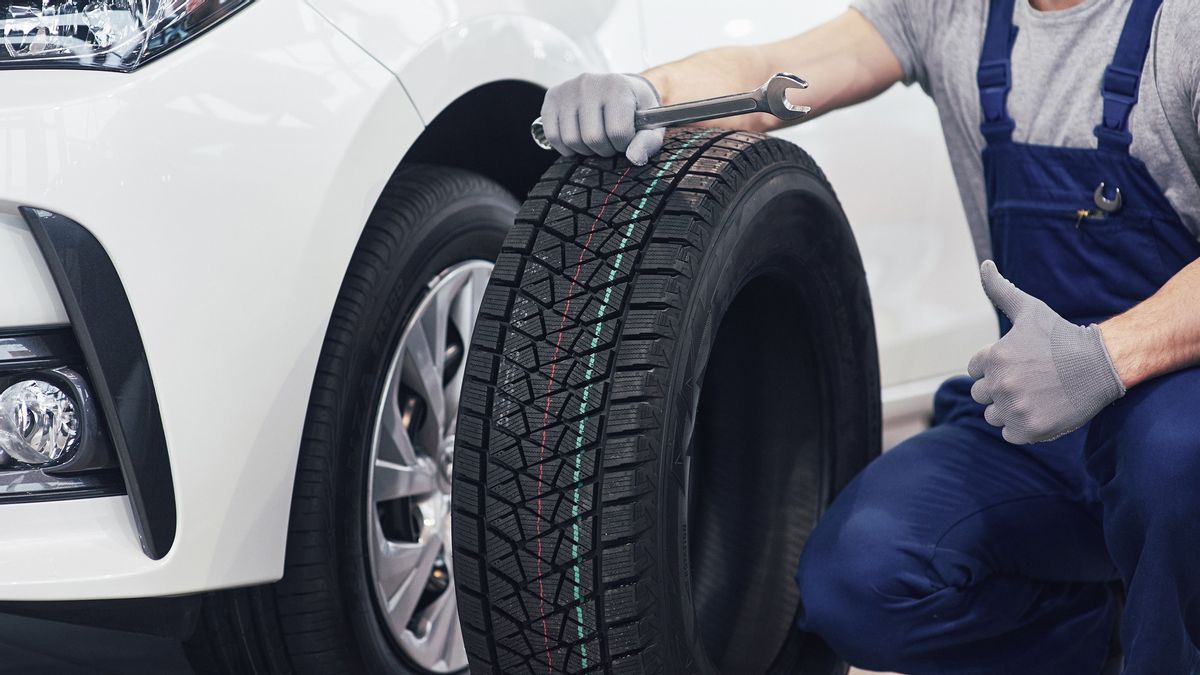JAKARTA - In the midst of an era that further emphasizes sustainability, shifting to environmentally friendly vehicles has become a must. The focus is now not only on machinery and fuel, but also on crucial components, such as vehicle tires.
Vehicle manufacturers are now competing to present various environmentally friendly vehicle options, ranging from hybrid to pure electricity, to even hydrogen-fueled ones. But the question is, is the tire of this vehicle also environmentally friendly? Apparently, it is still not entirely. Research shows that the black powder produced by the tires is very toxic and has a negative impact on air, soil, and water.
Aus tires leave tiny particles known as Tire and Road Wear Particles (TRWP), formed due to friction between tires and roads. TRWP contains toxic substances, such as 6PPD-quinone, which can have a negative impact on human environment and health. Some tire manufacturers, such as Goodyear, already support regulations that limit the use of 6PPD to reduce its impact.
According to research from Imperial College London, quoted from The Verge, November 17, every year in the city of London, England, vehicles release 6 million tons of particles from the aus tires. Just imagine, in North America alone there are about 250 million tires thrown away every year.
SEE ALSO:
However, major tire manufacturers around the world are starting to pay attention to this. They not only focus on improving the performance of tires in dealing with tougher electric vehicles, but also on minimizing environmental impacts. Environmentally friendly materials are starting to be used, and there are even green rubber in the future.
One of the interesting innovations is the use of guayules in tire manufacturing. Bridgestone. As the official tire supplier for IndyCar, Bridgestone introduced guayules as part of their environmentally friendly prototype effort. Guayule is a natural renewable source of rubber, along with other natural sources such as from hevea trees and even from Russian dandelions.
The use of guayule is not only a substitute step, but also has other advantages. In addition to being a drought-resistant alternative to natural rubber, guayule is also grown in the United States, reducing dependence on hevea trees that grow mainly in Southeast Asia.
Meanwhile, Yokohama uses the motorsport division to develop the Advan A005 tires, which consists of 33 percent sustainable materials. Michelin has also introduced tires that are claimed to consist of 53 percent renewable materials.
Not only vehicle manufacturers, but now many tire manufacturers have set a deadline to switch to renewable resources, Dunlop is committed to making 40 percent of their tires renewable by the end of the decade and 100 percent by 2050.
Bridgestone also set a target by 2050, while introducing new models with a larger focus on sustainability such as Turanza EV, which is made of 50 percent renewable tires and recycled materials.
Although complex, the composition of tires can be described as the use of natural rubber and synthetic rubber, each of which is around 25 percent, the use of fillers such as black carbon and silica is around 25 percent, and the rest includes steel, textiles, oil, resin, and other materials.
With the innovation and commitment of tire manufacturers, everyone hopes to see a future where environmentally friendly mobility is not only realized in vehicles, but also through vital components such as tires.
The English, Chinese, Japanese, Arabic, and French versions are automatically generated by the AI. So there may still be inaccuracies in translating, please always see Indonesian as our main language. (system supported by DigitalSiber.id)















